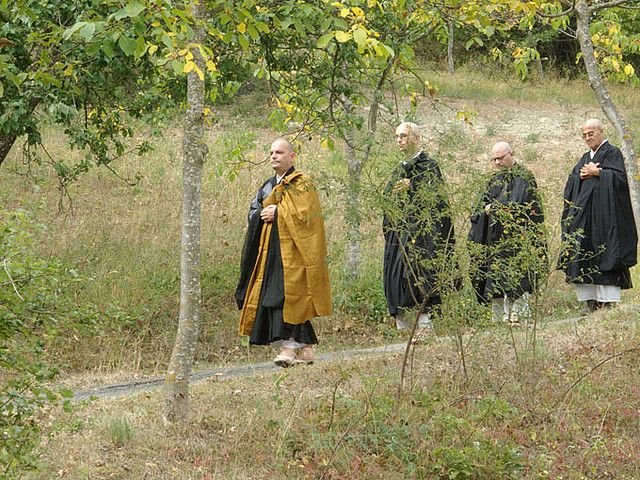
The Transformative Power of Talismanic Art
~ by Alison Evans
In May 2023 I went to a talk in Stanford, WC. A sign caught my eye – “Born as the Earth – a Zen Heart School”. I went over for a closer look and landed up in a conversation with Nangaku, its founder, who is a Zen monk and initiated shaman.
A 6 month course was starting in July. Little did I know, my life was about to change forever. We kicked off with the Visionary Fire Module.
I set an intention for the month. We were given instruction on how to practice Zazen Meditation. Then I was trained in the Protocols and the Agreements of Community Council. My first Council was amazing. I cried my way through it and felt so supported. The guidance was just lovely – like a warm hug. I learnt the importance of speaking from the “I”.
We received a whirlwind of information about our relationship to our ancestors, inspiration, passion and the transmutational power of Fire. I was tasked with building a home-altar. The ritualistic creativity was right up my street! I learned how to communicate with my ancestors by using the rhythm of a stick drumming on a stone to mimic my heartbeat.

We were encouraged to grieve with them – healing tears are gifts for the ancestors. It was as though someone had uncorked all that I had been suppressing for so many years. The tears came, and with them my healing began. Gathering up sticks of all I needed to transmute, I placed them on my altar. I burnt my sticks in a powerful healing ceremony. I released, and again cried and cried.
I received 2 monthly coaching sessions, and a divination – which was intriguing. I listened to my divination 6 times before I started integrating what had being communicated. We closed off our Fire Module which allowed my healing to marinate before starting the Compassionate Water Module.
Slightly more educated and better prepared, I packed up all my altar pieces and photos of my ancestors to create my Water shrine while travelling through Italy. I created temporary altars every second day. I set a new intention for the month.
Water and I resonated immediately – it all made so much sense. Water, the great balancer returns to equilibrium as fast as possible with its medicine of solving dilemmas, compassion, reflection and transparency.
I meditated my way across Italy, practising observing what my internal waters were doing. I experimented with my emotions and how they affected my water and felt very empowered to regain control over external influences.
I had 2 fantastic coaching sessions with Nangaku when I learnt that my angels always look out for me. I learnt too, that “those” demons are mine. They dedicated to keeping me safe – a big lesson for me. While people come into my world as angels they may leave as demons. Others may experience me as both an angel or a demon depending on how they respond to me. The lesson here for me was Oneness.
I loved my Water ceremony to whom I offered eggs, milk and honey, along with messages and symbolic gifts to release old blockages.
We closed off our Water Module and allowed the medicine of Fire and Water to deeply integrate.

The Grounded Earth Module began in September. I am collecting sacred items, as I have always done (though more consciously now), to create new altars for each month’s Elemental Training.
My altar is becoming my safe space. As I find my voice and become more empowered I am loving the Wednesday evening Community Council. My tears are drying up. I feel calmer, more grounded and centered. I learnt a valuable lesson on how to stay in balance by being in my centre. When off-balance, I can simply return to my centre and detach from my constant internal dialogue.
My intentions are more resolute and clear. Through meditation I am creating longer pauses between triggering stimuli and my habitual responses to them. My emotional waters are calming and my intuition is sharper!
We are about to end our Grounding Earth Module, and I am preparing to gift Mother Earth my homecoming collections.
“I have become aware that the art I had been instinctively creating using sticks, stones, feathers and bones, is my unique medicine gift to the world. I completed my first “conscious” Talismanic Art Piece. I based it on my journey with Born as the Earth School so far.”
The unlocked padlock and key represents the Gate of the Gatekeeper Apprentice Training.
This wisdom is made readily available and generously shared by Nangaku and his apprentice Raine.
The circle represents the medicine wheel as experienced in my divinations with Nangaku.
I bring the ancestors and a candle in as tribute to the Fire Dragon.
Seashells and yin-yang duality, purposely off-balance, represent the Water Dragon.
The centre piece, Mother Earth, is connected to the other 4 Modules.
Although I haven’t completed the Nature Module yet, I have chosen a feather and seed pods as representation.
The stones in the Stone Module are self-explanatory – they and the sand and seashell mix remind me of “As Above, So Below.”
The coins carry 2 messages. They represent coins from my divinations and the price paid for my impact on the environment.
The chain, symbolic of each one of us working together to carry the gift that is Earth School – its strength dependent on the weakest link. Each link the same, carrying the whole.
The “tree”, larger than life, grows out of the circle reaching out into new realms.

Nothing can be unheard or unseen. The wisdom I have already gained through this experience with Nangaku and Earth School has changed my very being. I know it will continue to do so – nothing will ever be the same again – thank God!
















